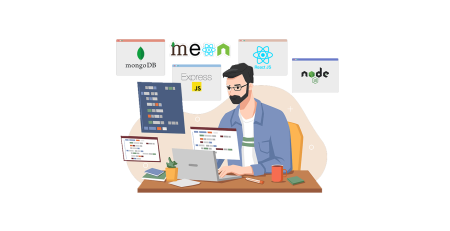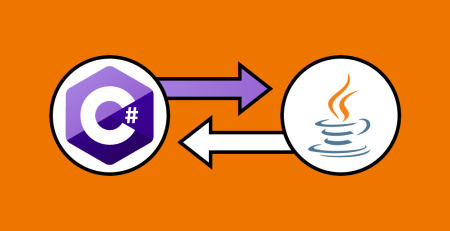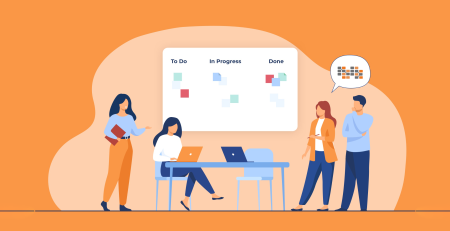Budgeting Software Projects: Overcoming Common Mistakes
Table of Contents
Introduction
We’ll explore the complexities of software project budgeting in this extensive book, pinpoint the most common errors, and offer doable solutions to fix them. Software projects that help firms budget are essential for efficiently allocating resources, managing money, and reaching well-informed judgments. But these initiatives frequently make typical errors that can impede development and result in expensive setbacks. Whether you work as a developer, project manager, or stakeholder in the business, understanding these concepts will put you on the right track to succeeding with your budgeting software initiatives.
1: Understanding the Importance of Budgeting Software Projects
Budgeting serves as the core of financial management across businesses of various scales. It extends beyond mere fund allocation, encompassing strategic decision-making, resource optimization, and the assurance of long-term sustainability. In the current dynamic business environment, marked by intense competition and constantly shifting market conditions, the importance of proficient budgeting cannot be emphasized enough.
1.1 The Evolution of Budgeting:
In the past, budgeting relied heavily on manual efforts, which were laborious and time-consuming, requiring extensive work with spreadsheets, numerous calculations, and data from various sources. However, the introduction of technology has revolutionized the budgeting landscape. Budgeting software has emerged as a revolutionary tool, providing automation, seamless integration, and immediate access to insights. This transformative shift enables businesses to swiftly make well-informed decisions.
1.2 The Role of Budgeting Software Projects:
Software project budgeting is essential to the uptake and application of these innovative technologies. These projects cover every stage of the software development lifecycle, from strategy and conception to implementation, oversight, and upkeep. Their main goal is to create, develop, and implement budgeting software that is specifically suited to the goals and requirements of the company.
1.3 Benefits of Budgeting Software Projects:
Software project budgeting has several advantages. First of all, they minimize the time and effort needed to develop, examine, and amend budgets by streamlining and optimizing the budgeting process. Second, by removing human error and guaranteeing data integrity, they improve accuracy and dependability. Thirdly, they give stakeholders complete visibility into financial performance, allowing them to monitor important indicators, spot patterns, and make data-driven choices.
1.4 Driving Organizational Success:
The ultimate objective of software project budgeting is to promote organizational success. These programs give organizations the tools and insights they need to deploy resources efficiently, find ways to save costs, and seize possibilities for expansion. Additionally, they promote flexibility and agility, enabling companies to react quickly to changing market conditions and new trends.
Conclusion
To sum up, budgeting software initiatives have a major role in transforming how companies handle their financial operations. Through the use of automation, technology, and data-driven insights, these initiatives enable enterprises to improve the accuracy, efficiency, and flexibility of their budgeting procedures. The necessity of budgeting for software initiatives will only increase as companies adjust to the demands of the digital era and continue to change.
2: Identifying Common Mistakes in Budgeting Software Projects
Budgeting software initiatives can be revolutionary, but they are not without difficulties and traps. We’ll look at a few of the most typical errors that companies make when starting software budgeting initiatives in this chapter. Businesses may reduce risks and guarantee the success of their projects by being aware of and proactive in resolving these problems.
2.1 Inadequate Planning and Preparation:
Ignorance of planning and preparation is one of the most common blunders made while budgeting software projects. Implementation that is hurried can result in scope creep, missed deadlines, and budget overruns if requirements, objectives, and restrictions are not clearly understood. Moreover, resistance to change and misalignment may arise from not including important stakeholders early enough.
2.2 Unrealistic Expectations:
Setting irrational expectations for the capabilities and results of the budgeting software is another typical error. Unrealistic expectations can doom a project from the outset, whether they are related to underestimating the time and resources needed for implementation or expecting the software to cure all financial problems overnight. Setting attainable, specific goals and managing expectations from stakeholders in line with them are crucial.
2.3 Poor Communication and Collaboration:
Collaboration and effective communication are essential for software project budgeting to be successful. Nonetheless, a lot of businesses undervalue the significance of encouraging candid communication between stakeholders, end users, and project team members. Inadequate communication can impede project development and compromise results by causing misconceptions, delays, and dissatisfaction.
2.4 Scope Creep and Feature Creep:
Budgeting software projects frequently faces two common challenges: scope creep, or the progressive extension of the project scope beyond its original limitations, and feature creep, or the addition of superfluous or complicated functionality. These occurrences may arise from weak change control procedures, inadequate requirements management, or pressure to satisfy stakeholder demands. Scope and feature creep can result in project delays, money overruns, and decreased user satisfaction if there aren’t strong controls in place.
2.5 Lack of User Training and Adoption:
The effectiveness of even the most sophisticated budgeting software depends on its users’ ability to use it correctly. But a lot of businesses undervalue user adoption programs and training because they think staff members would understand the software’s features on their own. Because of this, users could find it difficult to fully utilize the program, which could result in mistakes, inefficiencies, and reluctance to change.
2.6 Failure to Plan for Integration and Data Migration:
Budgeting software projects often involve integrating with existing systems and migrating data from legacy platforms. However, failure to plan for integration and data migration can result in compatibility issues, data loss, and disruptions to business operations. It’s essential to conduct thorough assessments of existing systems, develop robust integration strategies, and allocate sufficient time and resources for data migration activities.
Conclusion
In conclusion, budgeting software projects are susceptible to a range of common mistakes that can derail progress and compromise outcomes. From inadequate planning and unrealistic expectations to poor communication and scope creep, these pitfalls can hinder project success and undermine organizational objectives. By identifying these mistakes early and implementing proactive measures to address them, businesses can maximize the value of their budgeting software projects and achieve long-term success.
3: Overcoming Planning Pitfalls in Budgeting Software Projects
Effective planning is the cornerstone of success for budgeting software projects. In this chapter, we’ll explore strategies to overcome common planning pitfalls and ensure the smooth execution of these critical initiatives.
3.1 Establish Clear Objectives and Requirements:
Establishing precise goals and specifications is one of the most important phases in the planning of a budgeting software project. Gather feedback and coordinate on project objectives by including important stakeholders from within the company. You may certain that everyone is working toward the same goals by avoiding ambiguity and explicitly stating the project’s scope and intended outcomes up front.
3.2 Conduct Thorough Needs Assessment:
To determine the precise demands of your company, carry out a complete needs assessment prior to choosing a budgeting software solution. Take into account elements like user experience, reporting features, scalability, and integration potential. You may choose a software solution that fits your objectives and goals by being aware of the particular demands and difficulties that your company faces.
3.3 Develop a Comprehensive Project Plan:
After deciding on a software solution and defining your goals, create a thorough project plan that includes the schedule, deliverables, and milestones. Assign team members duties and divide the project into doable tasks. you prevent delays and setbacks, make sure you distribute resources correctly and plan for eventualities.
3.4 Manage Stakeholder Expectations:
In order to control expectations and guarantee project success, effective communication with stakeholders is crucial. Inform stakeholders on the status of the project, its milestones, and any alterations to the original plan. To guarantee alignment with stakeholder demands and goals, be open and honest about any risks and obstacles. You should also routinely seek input.
3.5 Implement Agile Methodologies:
Adopting agile approaches, like Scrum or Kanban, can help with adaptation and iterative development. By allowing for the gradual delivery of functionality, agile methodologies facilitate early and frequent input from stakeholders. You may adapt fast to changing requirements and provide value to your business more effectively by embracing flexibility and teamwork.
3.6 Monitor and Adjust as Needed:
Keep an eye on the project’s development over its entire lifespan and make necessary adjustments to stay on course. Review important KPIs on a regular basis, such as stakeholder satisfaction, deadline adherence, and budget use. If goals are not being accomplished or if new possibilities present themselves that call for a change of direction, be ready to adjust your route.
3.7 Conduct Post-Implementation Reviews:
Conduct a post-implementation evaluation once the budgeting software project is finished in order to assess the results and pinpoint any lessons discovered. To evaluate the project’s performance and pinpoint areas for improvement, get input from stakeholders and the project team. Make use of this data to ensure ongoing progress by streamlining procedures and practices for next projects.
Conclusion
Software projects that are budgeted for success require careful planning. You may reduce risks and guarantee the successful completion of these important projects by setting clear objectives, carrying out in-depth requirements analyses, and creating detailed project plans. You may avoid planning mistakes and successfully implement budgeting software solutions that provide value to your company by embracing agility, collaboration, and continuous development.
4: Managing Expectations and Scope in Budgeting Software Projects
In budgeting software projects, managing expectations and scope is crucial for maintaining alignment between project deliverables and organizational goals. In this chapter, we’ll explore strategies to effectively manage expectations and scope throughout the project lifecycle.
4.1 Establish Clear Communication Channels:
The secret to controlling scope and expectations is effective communication. Provide frequent meetings, status reports, and documentation to all project stakeholders as well as clear routes for contact. Make certain that every stakeholder is aware of their roles and responsibilities as well as the goals, schedule, and scope of the project.
4.2 Define Project Scope:
Establish the scope of work in detail before the project starts, taking into account the features, functionalities, and deliverables that the budgeting software will have. Prioritize needs and set boundaries in close collaboration with stakeholders to avoid scope creep. To act as a guide throughout the project, record the scope in a scope statement or project charter.
4.3 Set Realistic Expectations:
Communicate openly with stakeholders about what can be accomplished within the project’s realistic restrictions, taking into account factors like time, money, and resources. Control expectations by giving precise estimates for project expenses and time, together with information about any possible hazards and dependencies. Steer clear of overpromising and underdelivering, since this can damage your reputation and cause discontent.
4.4 Implement Change Control Processes:
Any project will inevitably experience change, but in order to avoid scope creep, changes must be managed skillfully. To assess and accept suggested modifications to the project scope, schedule, or budget, formal change control procedures should be established. Demand that interested parties submit change requests that detail the purpose, effects, and resources needed to implement the suggested change. Before approving or rejecting a modification request, consider whether it satisfies predetermined criteria, such as being in line with project objectives and available resources.
4.5 Conduct Regular Reviews and Adjustments:
Review progress against the project scope and objectives on a frequent basis throughout the project lifecycle. To spot any plan deviations, keep an eye on important indicators including budget utilization, deadline adherence, and stakeholder satisfaction. Modify the project scope or plan as needed to take into account evolving needs, goals, or limitations. Inform the project’s stakeholders of any changes and how they could affect it.
4.6 Manage Stakeholder Expectations:
Control expectations among stakeholders by giving them frequent information on the status, risks, and problems of the project. Maintaining stakeholder confidence and support requires being proactive in addressing issues and resolving disagreements. Get input from stakeholders to make sure their goals and requirements are being addressed, then modify the project plan as necessary. Fostering trust and collaboration throughout the project is contingent upon the implementation of effective stakeholder management.
Conclusion
Effective management of expectations and scope is critical to the success of software budgeting initiatives. Project managers may make sure that project deliverables and organizational goals are aligned by creating clear communication channels, defining project scope, setting reasonable expectations, putting change control procedures in place, and managing stakeholder expectations. Stakeholder satisfaction, accountability, and transparency are all enhanced by effective expectations and scope management, which eventually results in successful project outcomes.
5: Communication Strategies for Success in Budgeting Software Projects
Effective communication is the lifeblood of budgeting software projects, facilitating collaboration, alignment, and transparency among project stakeholders. In this chapter, we’ll explore key communication strategies to ensure the success of budgeting software initiatives.
5.1 Establish Open Channels of Communication:
By providing clear routes for the exchange of information, updates, and feedback, you may foster an environment of open communication. Make use of collaboration platforms, email, and instant messaging as project management tools to help team members, sponsors, and stakeholders communicate with each other. To promote cooperation and alignment, encourage candid communication and active engagement.
5.2 Define Communication Protocols:
Establish communication standards to guarantee that, over the course of the project, information is shared efficiently and consistently. Establish rules on the frequency, structure, and substance of communications. Include frequent status updates, progress reports, and accomplishment of milestones. Determine important stakeholders and their individual communication requirements, then clearly define roles and responsibilities for communication.
5.3 Foster Collaboration and Engagement:
Encourage cooperation and involvement from project participants by providing avenues for communication and involvement. Arrange frequent brainstorming sessions, workshops, and meetings to get feedback, exchange ideas, and find cooperative solutions to problems. Promote interdisciplinary collaboration and information exchange among project team members to take advantage of their varied backgrounds and viewpoints.
5.4 Tailor Communication to Audience:
Recognize that various stakeholders may demand different degrees of detail and different updates at different times, and adjust communication to suit their requirements and preferences. Provide pertinent information without needless complication or technical jargon in a simple, succinct, and approachable manner. Charts, graphs, and diagrams are examples of visual aids that may be used to improve comprehension and memory of important ideas.
5.5 Practice Active Listening:
To make sure that all parties involved feel heard and appreciated, engage in active listening. Encourage team members to be open and honest in sharing their thoughts, worries, and criticism without worrying about criticism or retaliation. Show compassion and understanding by recognizing and respecting other people’s viewpoints. Make an effort to get clarification and input in order to make sure that the message is relevant and clear.
5.6 Address Conflicts and Issues Promptly:
Deal with disputes and problems as soon as possible to keep them from getting worse and impeding the advancement of the project. Promote a transparent and trustworthy culture by valuing candid communication and helpful criticism. Assist in resolving disputes through negotiation, mediation, or, if necessary, escalation to higher authorities. Concentrate on coming up with compromises that uphold the project’s objectives and preserve goodwill among stakeholders.
5.7 Celebrate Achievements and Milestones:
To honor the contributions of stakeholders and the project team, celebrate successes and milestones. Openly acknowledge successes and development while expressing your thanks and admiration for your hard work. Celebrate accomplishments with team activities, prizes, or other acknowledgment to boost spirits and drive.
Conclusion
Software project budgeting requires effective communication amongst project stakeholders in order to facilitate cooperation, alignment, and transparency. Project managers can make sure that communication supports project goals and cultivates positive relationships among stakeholders by establishing open channels of communication, defining communication protocols, encouraging collaboration and engagement, adapting communication to audience needs, engaging in active listening, promptly addressing conflicts and issues, and celebrating accomplishments and milestones.
6: Leveraging Technology and Tools in Budgeting Software Projects
In the realm of budgeting software projects, technology plays a pivotal role in streamlining processes, enhancing productivity, and driving innovation. In this chapter, we’ll explore how organizations can leverage cutting-edge technology and tools to maximize the success of their initiatives.
6.1 Selecting the Right Budgeting Software:
Choosing the best software to satisfy the demands of the company is the cornerstone of every budgeting software project. Consider variables like cost, simplicity of use, scalability, integration possibilities, and functionality while evaluating the available solutions. For greater flexibility and accessibility, think about cloud-based solutions. Additionally, make sure the software you select fits the goals and needs of the organization’s budget.
6.2 Project Management Software:
Project management software acts as the central hub for coordinating, strategizing, and monitoring budgeting software projects. Employ powerful project management platforms like Asana, Trello, or Jira to craft project blueprints, allocate responsibilities, monitor advancement, and foster collaboration among team members. Utilize functionalities such as Gantt charts, Kanban boards, and task interdependencies to proficiently oversee project schedules and resource allocation.
6.3 Collaboration Platforms:
Software projects that are budgeted successfully require effective teamwork. Use collaboration tools like Google Workspace, Slack, and Microsoft Teams to help project stakeholders communicate and work together. Establish specific channels or workplaces where people can share papers, discuss project updates, and work together to solve problems immediately. Regardless matter where they are physically located, encourage team members to work together smoothly.
6.4 Data Analytics and Business Intelligence Tools:
Tools for business intelligence and data analytics offer insightful information about financial performance, trends, and projections. Use analytics programs like Looker, Power BI, or Tableau in conjunction with your budgeting program to create reports, display data, and spot trends. Use predictive analytics to project future financial results and make data-driven decisions that will increase the size and profitability of your company.
6.5 Automation Solutions:
Automation solutions save up time for more strategic endeavors by streamlining repetitive chores and workflows. Use workflow automation technologies to automate alerts, approval procedures, and data input, such as Automate.io, Zapier, or Microsoft Power Automate. Reduce mistakes and boost productivity by using robotic process automation (RPA) to automate manual operations like data input, report production, and reconciliation.
6.6 Integration Middleware:
Data interchange and smooth communication across various applications and systems are made possible by integration middleware. To combine budgeting software with other business systems like ERP, CRM, and HRIS, use integration middleware solutions like MuleSoft, Dell Boomi, or Informatica. Use pre-built connectors and APIs to make integration easier and guarantee data consistency throughout the company.
6.7 Cybersecurity Solutions:
Ensuring cybersecurity is crucial for preserving confidential financial information and thwarting online attacks. To safeguard your budgeting software and infrastructure, put cybersecurity solutions like firewalls, antivirus software, and encryption methods into use. To find weaknesses and proactively reduce risks, do routine security audits and assessments.
Conclusion
Making the most of technology and tools is crucial to the success of software budgeting initiatives. Organizations can achieve process streamlining, productivity gains, and innovation in their budgeting initiatives by choosing the appropriate budgeting software solution, employing project management software, leveraging collaboration platforms, utilizing data analytics and business intelligence tools, implementing automation solutions, integrating middleware, and placing a high priority on cybersecurity. In the current digital era, use technology as a strategic enabler to meet your company’s budgetary objectives and remain competitive.
7: Mitigating Risks and Uncertainties in Budgeting Software Projects
Budgeting software projects are not without risks and uncertainties, which can potentially derail progress and impact outcomes. In this chapter, we’ll explore strategies to identify, assess, and mitigate risks throughout the project lifecycle, ensuring successful execution and delivery.
7.1 Conducting Risk Assessments:
Doing in-depth risk assessments to find possible threats and vulnerabilities is the first step in risk mitigation. Include important stakeholders in the brainstorming process to rank risks according to likelihood and effect on project goals. Take into account elements like resource limitations, regulatory compliance, technological interdependence, and outside market influences. Include any possible repercussions and mitigation techniques for hazards that have been recognized in a risk registry.
7.2 Developing Risk Mitigation Plans:
Create thorough strategies for risk mitigation to handle each danger after risks have been identified. Assign accountability for every risk to an appropriate person and provide precise steps and deadlines for risk reduction. Take proactive steps, such as adding redundant systems, creating backup plans, or diversifying project resources, to lessen the chance and effect of risks. To guarantee continuous risk management, evaluate and assess risk reduction initiatives on a regular basis.
7.3 Establishing Contingency Plans:
Create backup plans in addition to risk mitigation strategies to deal with unanticipated circumstances or interruptions that could occur throughout the course of the project. To reduce the effect of delays or setbacks, identify essential route activities and likely sources of failure and prepare backup plans or techniques. Provide extra time, money, or resources to handle unforeseen circumstances as they arise to make sure the project keeps moving forward in spite of unanticipated obstacles.
7.4 Implementing Change Management Processes:
To effectively manage the risks arising from modifications to project scope, requirements, or priorities, change management is necessary. Create formal change management procedures to assess and approve suggested modifications, making sure they don’t add needless risks or interruptions and are in line with project goals. Demand that interested parties submit change requests that detail the purpose, effects, and resources needed to implement the suggested change. Prior to granting or rejecting a modification request, assess each one in light of predetermined criteria.
7.5 Monitoring and Reporting:
To detect possible risks and problems early on, track project performance and progress against predetermined metrics and benchmarks. Establish frequent reporting procedures to give stakeholders access to project status updates, milestones, and KPIs. To effectively communicate project risks, mitigation actions, and contingency plans, use dashboards, progress reports, and status updates. To guarantee alignment and support, be open and honest about difficulties and uncertainties. You should also ask stakeholders for their opinions.
7.6 Stakeholder Engagement and Communication:
Proactively include stakeholders throughout the project lifecycle to preserve alignment and skillfully handle expectations. Keeping stakeholders aware of potential effects and consequences requires open and honest communication regarding project risks, uncertainties, and mitigation actions. Encourage a culture of cooperation and partnership by inviting stakeholders to offer their opinions and suggestions about risk management plans and choices. To guarantee the success of the project, swiftly respond to stakeholder concerns and inquiries and rank their demands and priorities.
7.7 Continuous Risk Management:
Throughout the course of a project, risk management is a continuous process that calls for constant observation, evaluation, and modification. Review and update the risk register often to account for modifications to the project’s objectives, scope, or outside circumstances. To detect new hazards and evaluate the efficacy of current risk mitigation techniques, conduct recurring risk assessments and audits. Make constant improvements to risk management procedures based on best practices and lessons gained to keep the project flexible and robust in the face of unpredictability.
Conclusion
Software budgeting initiatives must successfully reduce risks and uncertainty. Organizations can reduce the possibility and impact of potential threats and disruptions by carrying out in-depth risk assessments, creating detailed risk mitigation plans, putting contingency plans in place, putting change management procedures into place, keeping an eye on and reporting on the status of the project, involving stakeholders early on, and continuously managing risks throughout the project lifecycle. Accept risk management as a strategic requirement to guarantee the smooth implementation and completion of budgeting software projects, allowing businesses to successfully meet their financial targets.
8: Continuous Improvement and Adaptation in Budgeting Software Projects
Budgeting software projects are dynamic endeavors that require adaptability and a commitment to continuous improvement. In this chapter, we’ll explore the importance of embracing change, fostering a culture of learning, and iterating on lessons learned to drive ongoing success and innovation.
8.1 Embracing Change:
In the dynamic world of software project planning, change is unavoidable. Adapting to changing market conditions, new technology, or changing company needs, companies need to see change as a chance for development and innovation. Encourage members of the project team to be flexible and adaptable so they can react swiftly and efficiently to changing conditions. Throughout the project lifetime, adopt change management techniques to reduce resistance and optimize the advantages of change.
8.2 Learning from Experience:
Every software project including budgeting offers valuable chances for growth and development. Consider previous initiatives carefully, noting achievements, difficulties, and opportunities for development. Review project results after implementation to determine lessons learned, get input from stakeholders, and assess project outcomes. To guide future initiatives and encourage organizational learning, record important discoveries, best practices, and lessons learned in a knowledge repository.
8.3 Iterating on Feedback:
In order to finance software projects and promote continual progress, feedback is crucial. At every level of the project lifecycle, from early planning and requirement collection to implementation and post-implementation assistance, get input from stakeholders. Engage in active listening, respond to concerns, and integrate ideas for enhancements into project schedules and procedures. To improve requirements, iterate on project deliverables, and improve the user experience overall, employ feedback loops.
8.4 Implementing Agile Practices:
Agile development approaches offer an iterative development framework that facilitates prompt response by businesses to evolving needs and priorities. Use agile techniques like Scrum or Kanban to divide projects into more manageable pieces and provide value gradually. Adopt cooperation, adaptability, and continual improvement as guiding principles to help the project team develop a culture of creativity and agility.
8.5 Leveraging Data and Analytics:
Data-driven insights are crucial for guiding choices and promoting ongoing development in software project planning. Utilize data analytics methods and technologies to evaluate project performance, spot patterns, and estimate future results. To find opportunities for improvement and optimization, track important indicators including budget utilization, deadline adherence, and stakeholder satisfaction. Utilize data to inform evidence-based decision-making and help you rank the activities that will benefit your company the most.
8.6 Cultivating a Culture of Innovation:
Staying ahead of the curve in the cutthroat world of software project planning requires innovation. Foster an innovative culture among the project team members by motivating them to take risks, experiment, and be creative. Give your team members the chance to experiment with novel concepts, tools, and methods of problem-solving. In order to promote an excellence and continuous development culture, celebrate accomplishments and give credit for creative contributions.
Conclusion
Driving success and innovation in software projects including budgets requires constant adaptation and development. Through adapting to change, gaining knowledge from past mistakes, refining feedback, applying agile methodologies, utilizing data and analytics, and fostering an innovative culture, companies may maximize project results, improve productivity, and provide more value to stakeholders. Budgeting software projects requires you to embrace the path of continual improvement as a strategic necessity for long-term success and sustainability.













Leave a Reply